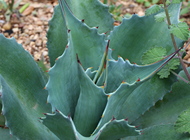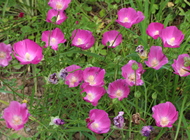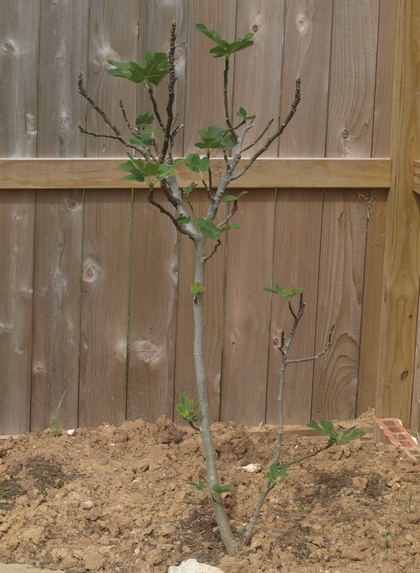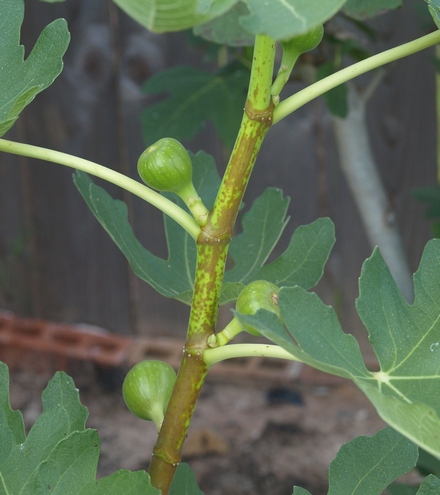 |
Ficus carica |
 |

| | 'Celeste' |
|

| | Young 'Celeste' |
| Common name |
fig |
| Family |
moraceae |
| Life cycle |
tree (Z6-9)   |
| Flowers |
insignificant, green (spring) |
| Size |
10-20' |
| Light |
sun-part shade |
| Cultural notes |
moist, well-drained soil |
Now that we've moved to subtropical Houston, we can finally grow figs and not only hope for their survival through winter, but for a crop of fruit too! Figs were among the first plantings we chose for our new garden, and we had high hopes for their contribution to the garden, and especially the sweet rewards. We selected two popular varieties: 'Celeste' and 'Brown Turkey', to encourage greater fruit production (although a single specimen should bear fruit without cross-pollination). 'Brown Turkey' produces purple-brown fruit with pink-amber flesh. 'Celeste' is also fairly cold-hardy, and produces sweet fruit with violet skin and rose-colored flesh, often with two crops in a season. Both varieties can be enjoyed fresh or dried.
Figs grow as large shrubs or small trees with a spreading habit and distinctively shaped leaves. Our specimens, bought at a discount nursery, were spindly and hardly lush to start with, but we were hopeful that with some TLC we could get them to thrive in our garden. And sure enough, we were rewarded in the following years with some fruit from both trees, although Celeste has been far more prolific. The disparity became even more pronounced after a few hard winters knocked Brown Turkey back to the ground, while Celeste escaped with only leaf drop – strange, because Brown Turkey was supposed to be the hardier of the two. After Celeste produced good harvests in the early years, our tree started to suffer from a condition that caused both leaves and developing fruits to drop in mid-summer. I suspect this is partly due to drought stress (we had some quite hot and dry summers), but that there is more to it.
The flowers of fig trees are pollinated by tiny female fig wasps that crawl into the cavities in which the flowers grow. Pollination is a side effect of the desire to deposit eggs in the ovary. As the figs develop, the larva develop and grow into adult wasps who mate and fly off to complete another cycle. However, modern varieties are parthenocarpic, which means that such pollination is not required.
|
In our garden, this plant grows in the following areas: left fence border, houston front yard About my plant portraits
PlantLinks to other web pages about Ficus carica
I welcome comments about my web pages; feel free to use the form below to
leave feedback about this particular page. For the benefit of other visitors
to these pages, I will list any relevant comments you leave, and if
appropriate, I will update my page to correct mis-information. Faced with an
ever-increasing onslaught of spam, I'm forced to discard any comments including
html markups. Please submit your comment as plain text. If you have a
comment about the website as a whole, please leave it in my
guestbook. If you
have a question that needs a personal response, please
e-mail me.
Last modified:
January 01, 2025
Contact me
|






